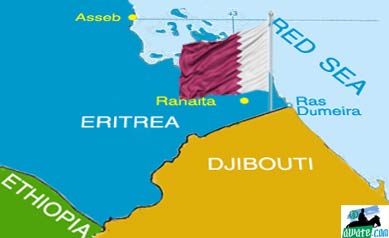More “Low Intensity Conflict” In The Eritrea-Ethiopia Border

As of mid-February 2012, Eritrean border troops in the Akhran area of Southern Eritrea have evacuated their posts and relocated 15 kilometers to the interior of Eritrea. This action was taken following Ethiopian repositioning of its forces, shortly after the mid January killing and kidnapping of European tourists by Afar Revolutionary Democratic Unity Front, ARDUF, an Ethiopian rebel group locally known as Uguugumoh.
The Akhran zone, located within the province formerly known as Akele Guzai, is composed of 12 villages, the largest being Meshal Akran.
Several villages that were left in limbo are now being administered by the Eritrean National Salvation Front (ENSF), one of Eritrea’s opposition groups.
Part of the administrative challenge is that residents of the border villages of Knn and Qntto are unable to use the Eritrean currency, the Nakfa, for cross-border shopping in Tigray in Northern Ethiopia. They are also complaining that their children’s education has been disrupted.
Ethiopian authorities did not reply to email inquiries by Gedab News.
The Akhran area of Eritrea is one of the areas that suffered greatly during the 1998-2000 Eritrea-Ethiopia war because of its proximity to the border which was the scene of fierce fighting.
Akhran, which is close to the Hazemo plains, is about 60 kilometers away from the town of Dekemhare, which is 45 kilometers away from the Eritrean capital, Asmara.
In a press release issued on March 2, 2012, an Eritrean opposition organization called National Democratic Front for the Liberation of Eritrean Saho (NDFLES) stated that Endele, Ma’era and parts of Assed-Af, all in the south central border with Ethiopia, are under its control.
The press release also stated that while the NDFLES combatants were conducting a meeting between February 28-29 at the administrative areas of Assed-Af and Endeli in the Gelalalo district, they were attacked by an Eritrean army force and that, in the battle that ensued, they managed to inflict casualties and defeat the force which retreated.
According to the Algiers Peace Agreement of December 2000, Eritrea and Ethiopia were to have a 25-km buffer zone, monitored by the United Nations, along their common border until the area was demarcated. The UN monitors (UNMEE) were placed in 2001. The Ethiopian government would not agree to demarcate the border in accordance with the terms of the Eritrea Ethiopia Boundary Commission (EEBC) unless the fate of the people and the villages in the border area are resolved first through a dialogue with the Eritrean government. The Eritrean Government rejected Ethiopia’s call for dialogue and insisted on demarcating the border as per the ruling of the EEBC. That deadlock resulted in EEBC’s decision to “virtually demarcate” the border. Subsequently the Eritrean government initiated a campaign to make the work of UNMEE so difficult that it had to withdraw. The border, now, is entirely un-monitored and it takes only a trigger action to restart the conflict.
Background
The National Democratic Front for the Liberation of Eritrean Saho (NDFLES) was formed in 2009 following an upheaval in the mountains of Akele Guzai, triggered by a captain’s challenge of a commander’s use of a female soldier as concubine.
In December 2009, the central committee of NDFLES announced that it would form a military base “within a short period” to engage the “PFDJ segment.” Since then, NDFLES has regularly issued communiques of its engagement with government forces on its website, www.mirad.org.
For more on ARDUF and its kidnapping of European tourists, read our report here.
The Eritrean regime rarely comments on armed groups challenging its legitimacy. It presents itself as an oasis of peace: the only exception was in its October 17, 2011 response to the Monitoring Group on Eritrea and Somalia where it admitted that there is a presence of “low intensity conflict” within Eritrea.
//END



Awate Forum